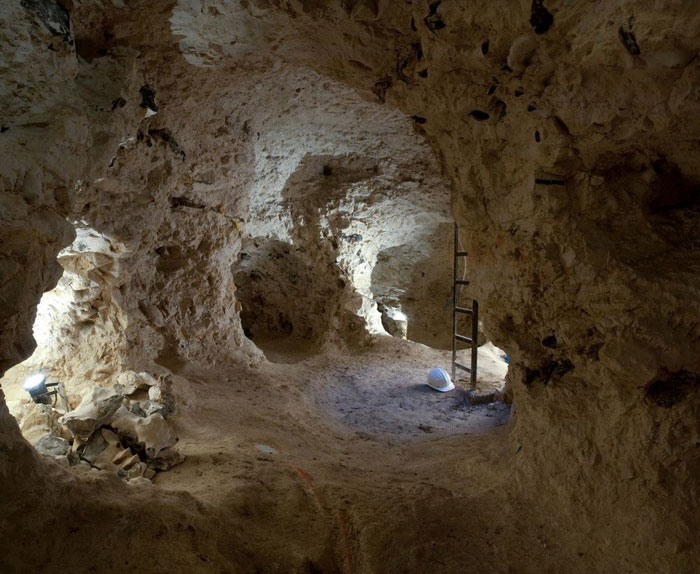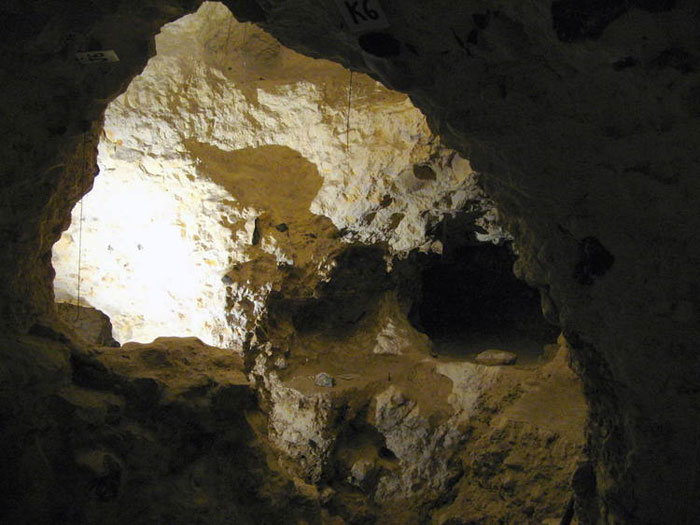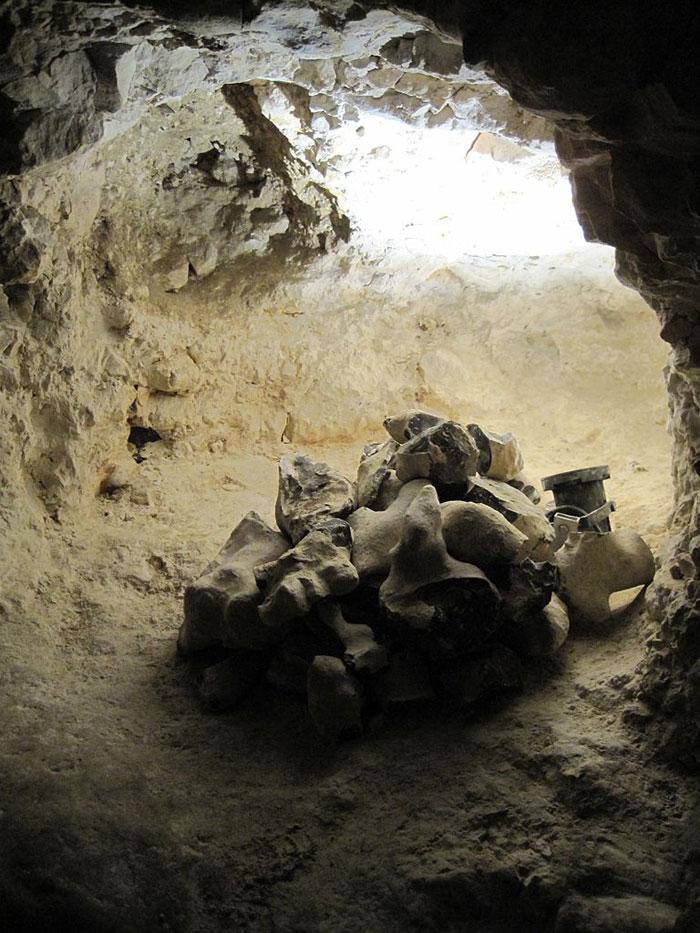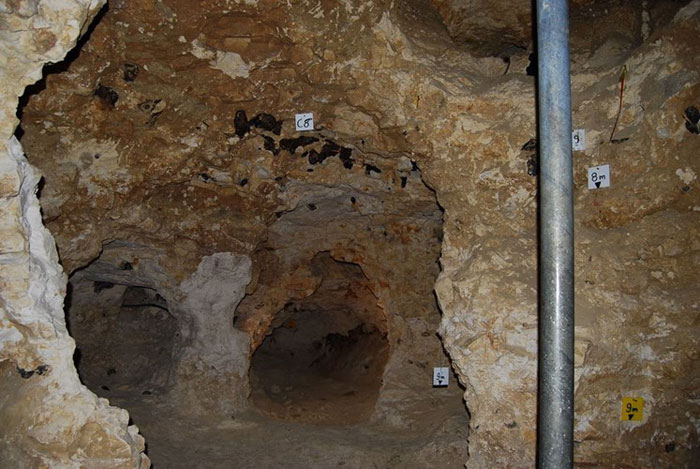The new Neolithic flint mines of Spiennes
The United Nations Scientific, Educational and Cultural Organization has recognized the new Stone Age volcanic quarries of Spiennes of the Kingdom of Belgium as a World Cultural Heritage in 2000.

Located in the limestone area of Spiennes, about 6 km southeast of Mons. Spiennes ' Neolithic flint deposits became World Heritage sites in the 24th Unesco session.

Spiennes's Neolithic flint mines are located in a large area of over 100 hectares. This is the earliest quarry that is also the largest mining area in Europe. According to scientists, Spiennes' new Neolithic Quarries began to form and exploit about 4000 BC. The mining work here ended around 750 BC.

The geography of a single, muddy terrain is divided by two rivers: the Trouille and Wampe rivers . The area around these two rivers has long been unable to cultivate due to the formation of rock deposits from the exploitation of flint mines.
The quarry of Spiennes was first discovered in 1840, but in 1912 the area was officially excavated. This is the first excavation area and also the largest in the Chau area. Europe.

Traces of mining at the flint mines were first discovered in 1840 but it was not until 1847 that the construction of a railroad through this area really got attention. The railway named Mons-Chimay cuts a part of the Petit-Spiennes plateau to clear this rugged mountain rock path earlier. Besides the discovery of the quarry, one also found a cultural- era village of Michelsberg , which had defenses. Although reports were sent to the Royal Academy of Belgium, it was not until 1912 that the quarry area was excavated and studied. Excavation and research work took place continuously for 2 years from 1912-1914 and from that time until 1953 there were a few more excavations,

The process of changing through many stages in Europe is also reflected in the Spiennes region through the Michelsberg culture. Michelsberg culture is present in a large territory including Germany, Belgium and northern France. The Spiennes area is the place that best represents the characteristics of this culture. That is the solution to strengthen people and nature. Flint mines in Spiennes are a prominent example of flint mining in which people have made improvements in applying science and technology to exploitation.

Spiennes is also the best mining area known in prehistoric times . In the period, miners knew how to exploit stone by digging deep into the ground and tunneling by special vertical shaft. The quarries here have been exploited for centuries and brought development to the area's prehistoric inhabitants during that period. The mining activities here are also a vivid illustration of the prehistoric people who invented the technology as well as developed the technology over time to serve their exploitation and production. This is also a concrete illustration of the general cultural development of prehistoric people .

Through the artifacts found and many studies, scientists believe that the exploitation of flint at Spiennes Flint Quarries has been going on continuously, seemingly without any interruption of time. From the early stages of the middle of the Stone Age to the Neolithic period.

The work of exploiting flint stone here has served the production of pottery in the later period. This is demonstrated by countless pottery artifacts found underground. The artifacts found here are very diverse from large sized flames to pottery and metal. This proves that in a long time, many technological solutions have been invented and implemented here to serve the exploitation and production of human products.

The Neolithic flint mines of Spiennes in the Belgian kingdom were recognized by Unesco as a World Cultural Heritage under the criteria (i), (iii), (iv).
Criterion (i): The new Neolithic flint mines of Spiennes provide testimony to the early creation of prehistoric humans.
Criterion (iii): The emergence of a new stone culture marked an important milestone in cultural development with human technology. This culture has been shown very clearly in the area of ancient flint mines in Spiennes.
Criterion (iv): The Neolithic flint quarries of Spiennes are a striking evidence of the stone age quarry mining . At the same time it also marks the combination of people with scientific progress. The Spiennes area is also a region that clearly shows the great changes that took place in Europe around the time of 4000 BC. This was the first turning point in human settlement.
- Ancient people also drilled teeth
- The largest Neolithic city in China
- Kansas four-season grassland
- Animals have the ability to detect superhuman mines
- Discovering millions of years of amber masses with great value
- Misconceptions about bombs and mines that we still think are true
- Lead poisoning water crisis in the US city
- When did inequality appear?
- The Neolithic people created artificial islands from ... 5,600 years ago
- The United Nations remains a post-war way to prevent landmines
- Develop solutions to identify areas of landmines based on trees
- Detecting ancient artifacts 2,500 years when clearing bombs and mines
 Suzhou classic bonsai garden - China
Suzhou classic bonsai garden - China Chau Nguyen Dynasty
Chau Nguyen Dynasty Thai Son Mountain - World Wonder
Thai Son Mountain - World Wonder Ancient villages of Shirakawa-go and Gokayama
Ancient villages of Shirakawa-go and Gokayama Houses designed by Victor Horta in Brussels
Houses designed by Victor Horta in Brussels  Historical center of Brugge
Historical center of Brugge  Bell towers - World cultural heritage in Belgium and France
Bell towers - World cultural heritage in Belgium and France  Historical center of Vienna
Historical center of Vienna  Wachau Cultural Landscape
Wachau Cultural Landscape  Gunung Mulu National Park
Gunung Mulu National Park 